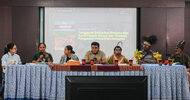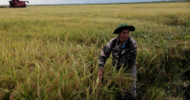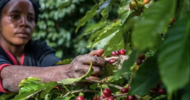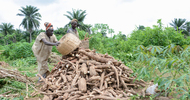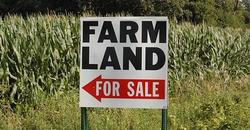
HighQuest Partners has documented an additional 100 ag investors that have made their first investment in food and agriculture in the first quarter of 2020, directly or via allocations to asset managers.
Opportunities in the new era of fragility
By Philippe de Lapérouse, Managing Director, and Mark Zavodynick, Project Manager, HighQuest Partners
This missive is going to be short and unfortunately not sweet, but certainly direct. I will avoid the temptation to say “I told you so”; no one likes to be reminded that they missed the boat or did not listen to sage advice when it was proffered before it was apparently needed. That said, given the interconnectedness of today’s world, it was only a question of time as to when a meltdown in the financial markets or black swan event would once again come to pass. The COVID-19 pandemic has spooked global financial markets, raised questions about the competence of governmental bodies and elected officials at all levels. and caused havoc in the daily life of populations around the world. We are in the throes of a turning point in history that began in slow motion like an oncoming car wreck and, at least in the United States where I live, has accelerated very fast within the last two weeks.
Like most, I am transfixed by daily events and the steady drip of new developments and have become a sleuth seeking “true news” and verifiable facts. Sadly, we all now know that it was not a question of if but when and how this shock to the world’s economy and sense of well-being would occur. There have been a number of warnings over the past 15 years that the probability of a global pandemic was high. The outbreaks of SARS in Asia and Ebola in Western Africa were harbingers of things to come. The global coronavirus pandemic has highlighted how fragile the institutions and activities we rely on for daily life are. We are entering a new era of fragility that is endemic in those networks (governments, medical systems, global trade, financial markets and security, etc.).
As the Global Financial Crisis (“GFC”) unfolded in late 2008 and early 2009, my colleagues and I were approached by institutional investor clients seeking to better understand opportunities to expand their allocation in alternatives from existing holdings in timber to farmland, real assets that, similar to timber, provided:
– Preservation of wealth;
– A hedge against inflation; and
– Protection against currency devaluation.
This past Monday, we released our inaugural Global AgInvesting Rankings & Trends Report 2019 which highlights key developments in food and agriculture’s (“F&A”) emergence as a distinctive asset class since the GFC, including:
– Over $131 billion in confirmed ag AUM;
– 698 organizations, or ag investors, raising and deploying capital globally; and
– Allocations being made across a range of alternative investment strategies (farmland, private equity, credit/debt, impact investing and venture capital).
Just in the first quarter of 2020 we have documented an additional 100 ag investors that have made their first investment in F&A directly or via allocations to asset managers. We believe that the $131 billion of AUM we confirmed in F&A for 2019 is far lower than the actual amount. Given the current crisis and the advantages that F&A provides to investors cited above, we anticipate that the number of organizations raising and deploying capital in the sector in 2020 will continue to increase substantially. This view is reinforced by conversations we have had over the past several weeks with asset managers who perceive that the asset class is at an inflection point and is poised for a major increase in fundraising and investment activity this year once economic activity opens up again.
While AUM in F&A has been on a steady increase over the past couple of years despite a drop in ag commodity prices starting in 2011, the disruptions caused to commodity trade flows by the U.S.-China trade war, and the decrease in Chinese demand for soybeans caused by the outbreak of ASF (Asian Swine Fever) in that country, the current COVID-19 pandemic is likely to raise a number of challenges and present opportunities for F&A investing going forward. Examples of developments to watch include:
Near-Term
Food security concerns driving up the global prices for key commodities such as wheat and rice, etc. Pressure on key food commodities will be exacerbated by stockpiling and government bans or limitations on exports.
Volatility in prices of soft and hard commodities; an example being the drop in corn prices in the U.S. due to lower consumption of transportation fuel in countries practicing social distancing.
The current impasse within OPEC between Russia and Saudi Arabia over oil pricing is a reminder that the energy markets are volatile and are likely to have near-term and long-term impact on the cost structure of F&A, in terms of the cost of inputs, production, processing and logistics (handling, storing and transporting it from point of production to consumption).
Risk of reduced crop planting (particularly fresh fruits and vegetables) due to a reduction in the number of farm laborers resulting from enforcement of social distancing ordinances and a reduction of farm laborers due to more stringent immigration enforcement in countries such as the U.S. and Great Britain. This situation could have negative consequences on out-take of key food crops in the upcoming harvest season in the Northern Hemisphere for the same reasons.
The report this past weekend that a tiger in the Bronx Zoo in New York City was infected with COVID-19 as the result of zoonotic transfer from a human, raises the specter of livestock, swine, and poultry possibly being at risk from COVID-19 and thereby endangering supplies of meat, milk, and eggs. This is certainly a worrying development which could have repercussions around the globe.
Longer-Term
The long supply chains for sourcing food to which we have become accustomed may no longer be sustainable in this new era of fragility. Just last week the Australian government announced that it had established a fund to subsidize transportation costs for exporting agricultural products in a bid to maintain the competitiveness of the country’s F&A sector. The trend of favoring consumption on locally produced foodstuffs, or “locavore”, over commodities transported over long distances may be gaining ground.
Consumers in developed markets who have become accustomed to the luxury of purchasing out-of-season food products all year long are likely to have to adjust their diets to consuming products only available on a seasonal basis. In addition, animal protein (particularly meat) is likely to decrease over time, offset by increased consumption of vegetable proteins and perhaps cultured meats. This is a trend that has already started to become entrenched among millennial consumers.
The use of robotics combined with AI (artificial intelligence) technology is likely to gain faster adoption across the F&A value chain to address labor shortages in agricultural production and handling.
The number of large institutions that have been evaluating opportunities to allocate to real asset (farmland) and other alternative investment assets strategies but have for a number of reasons been reluctant to “jump” on making allocations to F&A is likely to pick up in 2020. The challenge is that the number of qualified and experienced asset managers with track records in the F&A space is finite. Similar to any asset class, it is not only a question of where, what, and when to allocate, but importantly with whom to do so.
While the current environment is certainly challenging and fraught with risk, as experienced advisors in the F&A sector, we also see very interesting opportunities for both companies and financial investors already active in the sector or seeking to enter it. We welcome the opportunity to engage with you and your colleagues as to how to navigate and leverage the risks and opportunities in F&A globally in the new age of fragility.






